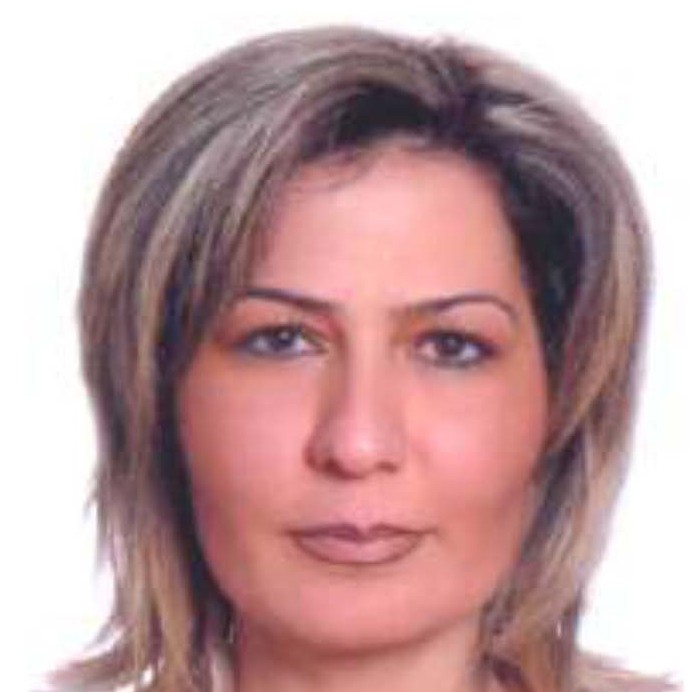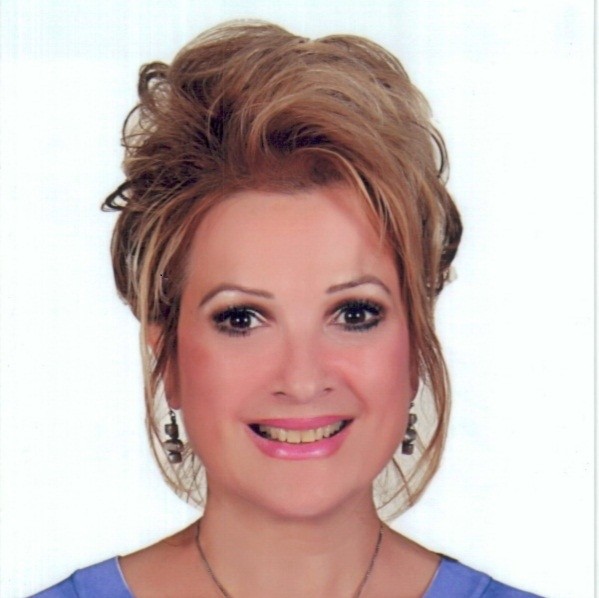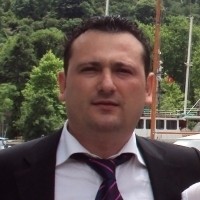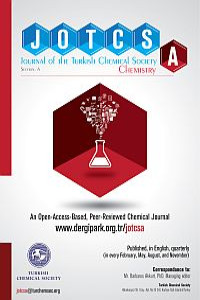Articles
REVIEW ARTICLES
Issue Editorial Board











Aim & Scope
Journal of the Turkish Chemical Society, Section A: Chemistry (JOTCSA) is an open-access and peer-reviewed publication of the Turkish Chemical Society. Our aim is to serve the chemical community with a high-quality open-access journal without requesting any fees in the form of page charges, article processing charges, and so on.
Our journal accepts
all papers for evaluation, provided that they are in a field of chemistry. The fields
include, but not limited to, analytical chemistry, biochemistry,
computational chemistry, electrochemistry, inorganic chemistry,
organic chemistry, and physical chemistry. Chemistry education papers are kindly directed to the Chemistry Education journal (JOTCS-C), available at https://dergipark.org.tr/jotcsc.
Author Guidelines
The article writing rules for JOTCSA are fairly simple and are explained in the article template below. Downloading the article template file is highly recommended. Most of the issues are outlined in the template file.
Please note that we have adopted a new heading system with numbers, starting from 10(1). Please check the article template below.
Additional Information of the Guide for the Authors, for Journal of the Turkish Chemical Society, Section A: Chemistry (JOTCSA)
The journal management requires that all authors (not only the corresponding author) register to ORCID at https://orcid.org/register and get a free ORCID ID. The registration process takes about only a minute. The corresponding author will complete the document of ORCID ID and e-mail addresses for editorial use. CTRL-clicking on the ORCID image next to the author name will enable the reader to view the ORCID profile of the given author.
We prefer that the authors use "Zotero" (https://www.zotero.org/, free of charge) or "Endnote" (https://www.endnote.com/, commercial), or similar online software like Mendeley (https://www.mendeley.com/?interaction_required=true, free of charge), for the generation of bibliographic list and citations. We are using the "Vancouver" citation style, which is available in all softwares mentioned above. After preparation of the article, please use the "convert citations to text" feature of the reference manager you use.
We are using iThenticate plagiarism solution and our maximum allowed score for the document is 30%. Higher scores are not allowed and the author will be given the plagiarism report and the manuscript will be returned to the authors. Whenever possible, the author is recommended to work with article editing firms to lower the score.
Please do not submit PDF copies of your articles for preliminary control. We accept Microsoft DOC, Microsoft DOCX, and LibreOffice ODT. We directly work on the manuscript, forming changes that are trackable.
Please do not submit your work again from the very beginning, if the management requires that you prepare a revision. Just browse to your existing submission and use the upload module to upload the newer version. If you are stuck, please send the revised article with an e-mail to the managing editor at jotcsa@turchemsoc.org.
Our journal will use, beginning from 10(1), a manual heading-based system with numbers, like 1. INTRODUCTION, etc.
You may download the article templates, depending on your word processor, from the link below. Kindly recall that we do not have any LaTeX templates for now:
*Article template (for Microsoft Word)
*Article template (for LibreOffice Writer)
Schemes usually used for reactions and related material will use Verdana, preferably at 9 or 10 points, inside the figures. Directly pasting from the drawing application into the word processor software is NOT recommended. Please use the "paste special" feature to paste it as an image (metafile pictures are strongly recommended).
Citing: Our journal uses a number-based reference system, and the number is given in normal parenthesis like (18). Other examples include (1-3, 18), (1-3, 18, 19-21), etc. The above-mentioned reference managers have the required tools to create citations in the text. When inserting a new paragraph, the manager will safely rearrange the citations, refreshing the numbers.
For proton or carbon nuclear magnetic resonance data, please see the article template above.
The words Scheme 1, Figure 1, etc., will have a full stop at the end of the caption. The caption text will be centered on the page.
Supplementary information: The authors are encouraged to use supplementary information, at the end of the article, for detailing the study with spectral data, crystal structure refinement data, and other types of material should you recommend including. All types of synthetic procedures will be included in the main text. Supplementary files continue the numbering and end with an even number of pages.
Usage of the units: The units will be, where possible, SI-based and the style g/mL will be preferred over g.mL-1. Please do not mix these two and be consistent throughout the manuscript about using the units.
Publication ethics: It is imperative that the authors comply with national and international ethical rules in research and writing the article. More information can be found at this link.
For studies including biological materials taken from animals and humans, the authors must provide the statement, in their manuscript (preferably in the Acknowledgments section), that they performed the study according to the Helsinki declaration (see here) and they must present the informed consent forms from the ethical council of their institution and also from the people donating biologic materials or relatives of them.
You are free to receive new issue alerts and read the contents. This open-access chemical journal can be added to your list of journals, and you can help us with the policies we are using in order to create a perfect example of open-access publishing. We will publish the journal quarterly, every February, May, and August, and November.
Our open-access policy is quite straightforward. No one should access a scholarly paper by paying money. All scholarly activities should be free to download, read, and cite. Open Access Journals are very nice examples of this philosophy, and their most valued and important asset is the presence of a strong peer-reviewing medium. Without this, an open-access journal would quickly turn into garbage. We, managers of this journal, will keep the importance of peer-review in mind, and use this asset as much as possible, in order to make the readers meet the authors.
Private information, including e-mails, names, or affiliations, will not be shared outside this open-access journal system.
Authors who publish in this journal agree to the following terms:
Creative Commons Attribution License: Authors transfer the copyright to the journal at the first publication with the work simultaneously licensed under a Creative Commons Attribution License that allows others to share the work with an acknowledgment of the work's authorship and initial publication in this journal. The journal only allows others to download the works that appeared in the journal and share them with others as long as they credit the journal, but they can not change them in any way or use them commercially.
*Copyright: Our journal has adopted the CC-BY-NC-ND policy and has started accepting articles under this definition. Also, please read our copyright terms from the copyright transfer form.
The copyeditor will investigate the article and make the necessary changes, and the process will continue.
Peer-review policy: A secretary is assigned first to evaluate the conformity of the paper to the journal's standards. If the check is positive, the paper is directed to the editor-in-chief for assignment of a Section Editor. They, along with an Assistant Editor, calls forth at least two reviewers, who are, if possible, experts of the field. If the reviewers accept the article, they fill in a form after their deliberations and submit their decisions. In case revisions are to be committed, the corresponding author is informed about the decision and a month is given to them. The corresponding author prepares a question-response document and also uploads the modified and edited manuscript file. The section editor or assistant editor asks the reviewers if the prepared document fulfills the reviewers' ideas, and if their views are positive, the article is accepted. If not, a second round is issued.
After acceptance, a production editor is called forth to send the document to a Language editor, a Layout editor,and a Proofreader. After these steps, the rendered document is submitted to publication, whose procedures is taken by the Editor or the Assistant Editor.
In the last step, the identical information is desired on the manuscript file and the metadata (what appears on the website). The Editor or Assistant Editor do this task and publish the document. It is desirable if a manuscript file is ready for publication, it is done as soon as possible after their procedures are complete. This is in harmony with the essence of open access spirit.
Ethical Principles and Publication Policy
Journal's Ethical Principles and Rules
Our journal adheres to international standards and COPE (Committee on Publication Ethics) standards and publishes articles by referring to them.
ETHICS
Guidelines for Editors: An editor (editors, associate editors, etc.) should objectively evaluate all articles submitted for publication, evaluating each on its own merits, regardless of race, religion, nationality, gender, seniority, or institutional affiliation. An editor should review and deal with a manuscript submitted for publication at reasonable speed. The editor has sole responsibility for accepting or rejecting an article for publication. The editor may seek assistance on an article from experts selected for their expertise and fair judgment. Until the review process is complete, the author should not disclose any information about the manuscript under review to anyone other than the author and appointed reviewers. It should respect the intellectual independence of the authors.
Authors: Our journal considers the person responsible for at least a part of the work as the author. Authors should be able to explain the problem in the study in depth. All authors for our journal are responsible for the content they submit. The corresponding author is responsible for accepting all authors from the first submission of the article and informing them about the submission process. If accepted, all authors are obliged to grant the publishing license on their behalf. Our journal assumes that the submission of the article is the complete agreement of all authors. For articles with more than 8 authors, all authors must make a statement stating what their contribution to the article is. It is not acceptable for JOTCSA to consider for publication anything that has been previously published, in whole or in part, in other journals. Nothing submitted to our journal should be analyzed elsewhere. Simultaneous submissions to JOTCSA and any other journal is considered a gross misconduct and all authors are strictly prohibited and all previous publications in JOTCSA are publicly retracted. Plagiarism and self-plagiarism will be treated in the same way. Multiple articles that cover closely related topics and/or variables are not recommended unless they can be included in a single article.
For studies involving biological materials from animals and humans, the authors should state in their articles (preferably in the Acknowledgments section) from the authorized committee of their institution, as well as from the biological material donors or their relatives, that they performed the study in accordance with the Declaration of Helsinki, and submit informed consent forms from the ethics committee.
Reviewers: JOTCSA invites colleagues to review their submissions based on their expertise, curriculum, and willingness to voluntarily review. By agreeing to review a draft, the referee commits to doing so in a timely manner. Delays are extremely negative for the review process and make it take much longer than it should. When asked to reply to an invitation email from a reviewer, they are kindly asked to respond to the invitation email by stating whether they are willing to review the article. This is a gesture of courtesy and avoids delays. By agreeing to review a manuscript, the referee declares that there are no conflicts of interest and that their review is for the enrichment and advancement of science. Reviewers who accept our requests and respect deadlines are scored positively and any final submissions they can submit to JOTCSA are given priority.
Journal's Open Access Policy: Our journal is open access and uses Dergipark's open access notifications. As soon as the article is published, it is open access and anyone can access it without paying any fee.
The Budapest Open Access Statement (BOAI) on this subject reads:
“By 'open access' to this literature, we mean its free availability on the public internet, which allows any user to read, download, copy, distribute, print, search or link to, search for indexing the full texts of these articles. They may not be transferred to software as data or used for any other legal purpose other than financial, legal or technical barriers that are an integral part of gaining access to the Internet. The only restriction on duplication and distribution, and the sole role of copyright in this field, should be to give authors control over the integrity of their work and the right to be properly accepted and cited.”
Journal's Publication Policy: Our journal does not charge any page fee or article processing fee, etc. The journal uses a double-blind peer-review policy to evaluate articles. The author presents his material and a secretary makes an initial assessment of it and decides whether the article is suitable for further processing or a rejection decision has been made. The same is true for all articles with a similarity score higher than 31% by iThenticate. It is welcome if the author decides to resubmit the material after substantial revision. When the article is accepted for peer review, the editor-in-chief decides who will be the section editor and forwards the article file to them. The section editor calls at least two referees who are experts in their fields and waits for their evaluations. The section editor collects the evaluations from the referees, makes a short list of the referees' suggestions, and sends the decision (acceptance, minor revision, major revision, rejection) to the author together with the article. The author receives the report and starts working, answers the questions and submits the corrected article and the processed report. In some cases, the section editor finds this sufficient and does not need to send the revised material to the reviewers. Otherwise, the referees comment on the revision and make their final decision. There are rare occasions when a revised draft needs additional editing sessions and the process starts over. After revisions, the article is likely accepted and forwarded to the copy editor, who examines the use of English and makes corrections to the article. The copied article is forwarded to the Layout Editor, which creates the final view of the draft and the final PDF file. The final PDF file is exported to the end reader and retrieved as needed as a list of revisions or markup directly on the PDF. The PDF file is corrected and submitted ready for publication, the short name of the PDF file is set, the reference list is checked, the author list is checked, and the ORCID IDs are entered. As the last step, the title, abstract, publication date and page range are checked and the DOI name is requested. If all goes well, the journal system allows the applicant to have a DOI name, then the article is registered in a journal issue, the ranking is determined, and the process is approved. The article is published and can be viewed on the journal's website. If something still needs to be fixed, the process starts again and the corrected article PDF replaces the old one. It should be noted that if the issue is published, there are five extra days to make changes. No changes are allowed after this period and the Erratum document should be issued and published in the next issue.
The time it takes to evaluate an article varies from article to article; however, it takes an average of four months to get results. Exceptions occur when a reviewer responds quickly or when the author prepares the report a few days after receiving it. In these cases, the assessment only takes a month or two. On the other hand, reviewers and authors may have delays, partly because the e-mail is caught by the junk mail filters and they are not aware of the progress; therefore undesirable delays occur. A similar reason is that the e-mail address of the reviewer or author is blocked or exceeded the quota, so the message never reaches the user.
The author is free to retract their article only at the first stage.
Conflict of interest: Authors should declare their conflict of interest (if any) at the end of the article. It should also be declared that there is no conflict of interest.
If there is a conflict of interest, the author or authors should be specific and state any financial affiliation of all authors of the article with any sponsoring organization and any for-profit interests represented by the organization and any product discussed or debated or for-profit.
Withdrawal: There is a form prepared by Dergipark that editors can fill in regarding withdrawal issues, and Dergipark will be informed.
For your information,
Prof. Dr. Hasan KÜÇÜKBAY
Chief editor, JOTCSA
Price Policy
Our journal does not require any forms of payment. It is a totally free and open-access journal.



